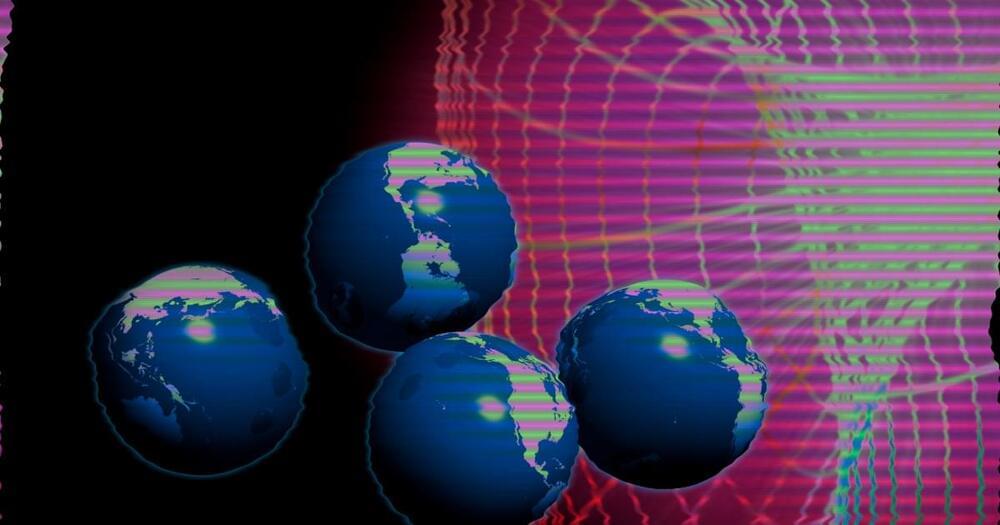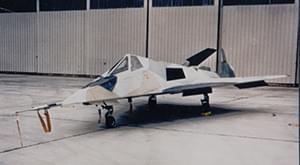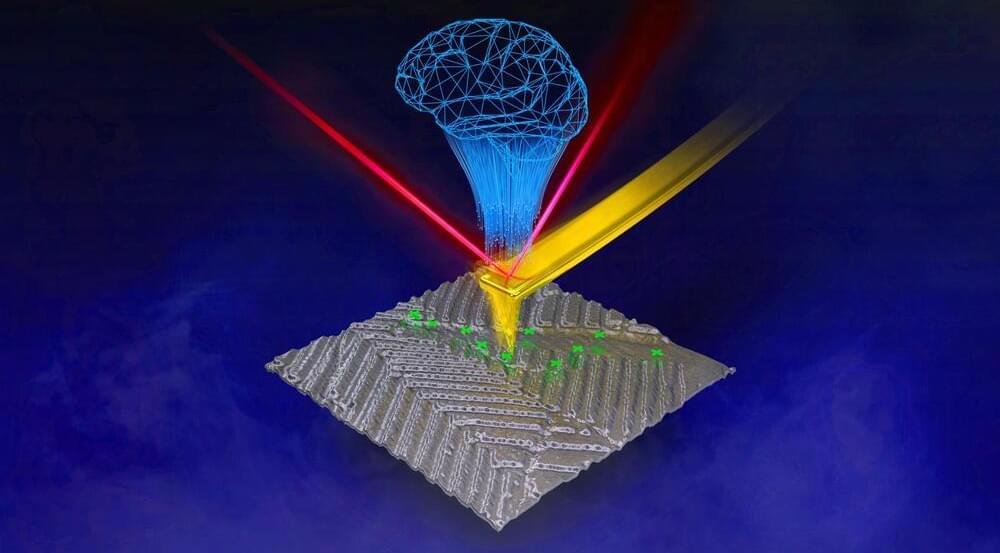Do the laws of physics place a hard limit on how far technology can develop, or could an advanced civilization re-write those laws?
Category: physics – Page 170
#Innovation
Posted in nuclear energy, physics
Today is the opening of The CAPT.(DR.) IDAHOSA WELLS OKUNBO STEM AND INNOVATION CENTER in the rural area of Iyara, warri, delta state, Nigeria.aa.
View insights.
21 post reach.
Physicists optimized a nuclear fusion reactor to overcome a problem that causes heat loss and prevents the device from sustaining fusion.
Three researchers published their findings this week in the journal Physical Review Letters and say their hypothesis is based on problems with the Hubble Constant, the rate at which the universe expands. Yesterday’s SciTechDaily report on the study says predictions for that constant are a lot slower than what we’ve measured in reality, and scientists are trying to figure out what’s causing the discrepancy. They say the cause could be a mirror world we can’t yet see.
“This might provide a way to understand why there appears to be a discrepancy between different measurements of the Universe’s expansion rate,” researchers said in a statement about their findings.
Scientists have long built models of the cosmos. Now the task is to create one that doesn’t violate any of the rules cosmological rules we’ve learned so far. The researchers say that if the universe is somehow exploiting what we know about its physics and symmetry there could be an invisible mirror world very similar to ours but invisible except through gravitational impact on our world.
Benjy WangProbably could be limited by a simulation restart.
Jim RohrichNo limits.
Omuterema Akhahenda shared a link.
PHYSICS:
Our electronics can no longer shrink and are on the verge of overheating. But in a new discovery from the University of Copenhagen, researchers have uncovered a fundamental property of magnetism, which may become relevant for the development of a new generation of more powerful and less hot computers.
Subscribe — https://bit.ly/3myAZOn.
You’d be instantly where you want to be if you moved at the speed of light. Indeed, light-speed travel has been a fantasy of many scientists and aerospace engineers who look for ways to achieve it.
And now, it seems Elon Musk and NASA have broken that fantasy code to build a light-speed engine that defies the laws of physics.
About Elon Musk Live.
🎥 Videos about Elon Musk, SpaceX, Tesla, Neuralink, The Boring Company and more.
🔔 Subscribe for more Elon Musk, SpaceX, Tesla, Neuralink, The Boring Company and more.
📝 Written, voiced and produced by Elon Musk Live.
Watch More Elon Musk Live Videos Here:
👑 Elon Musk: https://www.youtube.com/playlist?list…
🚀 SpaceX: https://www.youtube.com/playlist?list…
🚗 Tesla: https://www.youtube.com/playlist?list…
⚠️ Copyright Disclaimers.
• Section 107 of the U.S. Copyright Act states: “Notwithstanding the provisions of sections 106 and 106A, the fair use of a copyrighted work, including such use by reproduction in copies or phonorecords or by any other means specified by that section, for purposes such as criticism, comment, news reporting, teaching (including multiple copies for classroom use), scholarship, or research, is not an infringement of copyright.”
• We use images and content in accordance with the YouTube Fair Use copyright guidelines.
#ElonMusk #SpaceX #NASA
It’s said that the clock is always ticking, but there’s a chance that it isn’t. The theory of “presentism” states that the current moment is the only thing that’s real, while “eternalism” is the belief that all existence in time is equally real. Find out if the future is really out there and predictable—just don’t tell us who wins the big game next year.
This video is episode two from the series “Mysteries of Modern Physics: Time”, Presented by Sean Carroll.
Learn more about the physics of time at https://www.wondrium.com/YouTube.
00:00 Science and Philosophy Combine When Studying Time.
2:30 Experiments Prove Continuity of Time.
6:47 Time Is Somewhat Predictable.
8:10 Why We Think of Time Differently.
8:49 Our Perception of Time Leads to Spacetime.
11:54 We Dissect Presentism vs Eternalism.
15:43 Memories and Items From the Past Make it More Real.
17:47 Galileo Discovers Pendulum Speeds Are Identical.
25:00 Thought Experiment: “What if Time Stopped?”
29:07 Time Connects Us With the Outside World.
Welcome to Wondrium on YouTube.
Here, you can enjoy a carefully curated selection of the history, science, and math videos you’ve come to know and love from brands like The Great Courses, and more.
If you’ve ever wanted to travel back in time, wondered about the science of life, wished for a better understanding of math, or dreamt of exploring the stars … then Wondrium will be your new favorite channel on YouTube!
Researchers at the Department of Energy’s Oak Ridge National Laboratory are teaching microscopes to drive discoveries with an intuitive algorithm, developed at the lab’s Center for Nanophase Materials Sciences, that could guide breakthroughs in new materials for energy technologies, sensing and computing.
“There are so many potential materials, some of which we cannot study at all with conventional tools, that need more efficient and systematic approaches to design and synthesize,” said Maxim Ziatdinov of ORNL’s Computational Sciences and Engineering Division and the CNMS. “We can use smart automation to access unexplored materials as well as create a shareable, reproducible path to discoveries that have not previously been possible.”
The approach, published in Nature Machine Intelligence, combines physics and machine learning to automate microscopy experiments designed to study materials’ functional properties at the nanoscale.









